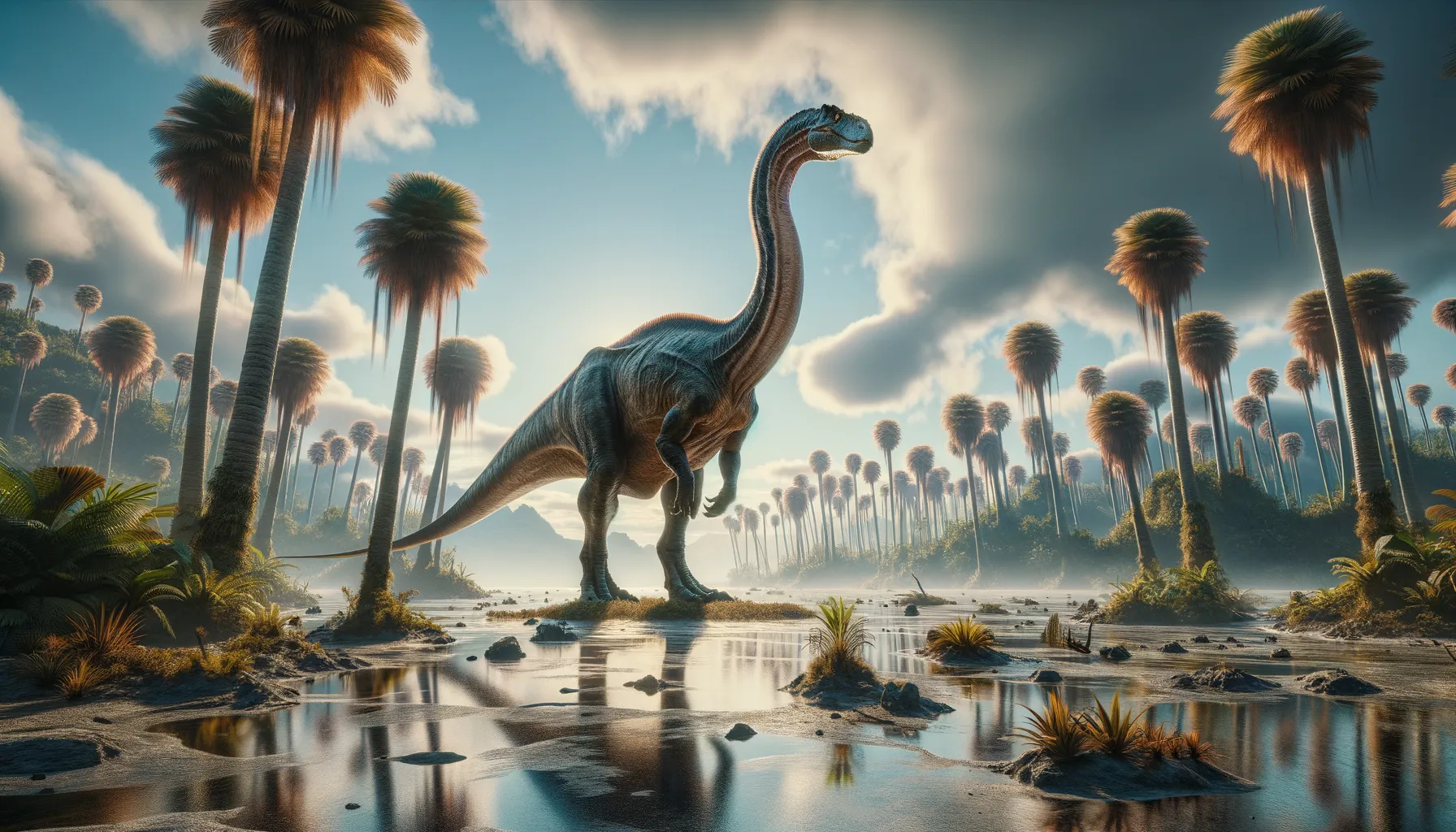
Bonitasaura
The gentle giant of the Late Cretaceous!
Period
Cretaceous
Length
About 10 meters long.
Height
Approximately 3 meters tall.
Weight
Around 6 metric tons.
Bonitasaura was a large, plant-eating dinosaur that lived around 80 million years ago during the Late Cretaceous period. It was a type of titanosaur, known for its long neck and tail. Despite its size, Bonitasaura was a gentle giant that roamed the areas of what is now South America. Its discovery has provided valuable insights into the diversity and adaptation of sauropods in prehistoric ecosystems.
Diet
Bonitasaura was a herbivore, primarily feeding on a variety of plants available during its time. It likely used its long neck to reach vegetation that was inaccessible to other herbivores. Its large teeth were adapted for stripping leaves from branches.
Hunting
As a herbivorous dinosaur, Bonitasaura did not hunt other animals. Instead, it focused on finding and consuming plant material. Its primary concern would have been avoiding predators, relying on its massive size as a deterrent.
Environmental challenges
Living in the Late Cretaceous period, Bonitasaura faced environmental challenges such as fluctuating climates and potential food scarcity due to seasonal changes. It had to navigate landscapes that might have been diverse, ranging from lush forests to arid regions. Predatory threats from large carnivorous dinosaurs were also a constant concern, requiring vigilance despite its size advantage.
Speed
Relatively slow-moving due to its massive size.
Lifespan
Estimated to live several decades.
First discovery
Discovered in Argentina in 2004.
Fun Facts
- Bonitasaura was a dinosaur that lived around 86 million years ago during the Late Cretaceous period.
- It was a sauropod, which means it belonged to the group of long-necked, herbivorous dinosaurs.
- Bonitasaura's remains were discovered in Argentina, providing significant insights into Late Cretaceous ecosystems in South America.
- Unlike some of its giant sauropod relatives, Bonitasaura was relatively small, estimated to be about 10 meters (33 feet) long.
- It had a notable jaw structure with a beak-like front, which might have helped it strip leaves from branches.
- The name Bonitasaura comes from the La Bonita locality where its fossils were found.
- This dinosaur's discovery has helped paleontologists better understand the diversity of sauropods in the Southern Hemisphere.
Growth and Development
Bonitasaura would have hatched from an egg, growing rapidly in its early years to reach a size safe from most predators. This rapid growth was essential for survival, as larger size reduced the risk of predation. As with other dinosaurs, its bones would have revealed growth rings, similar to trees, which can inform scientists about its life cycles and growth phases.
Habitat
Bonitasaura dwelled in what is now South America, likely in areas that had access to plentiful vegetation and water sources. Its habitat would have included varied landscapes, from dense forests to open plains. The region's climate during the Late Cretaceous would have supported diverse plant life, providing ample food resources.
Interaction with other species
Bonitasaura interacted with other herbivorous dinosaurs, possibly foraging in groups for safety. Its presence would have influenced the plant life of its environment through its feeding habits. It had to coexist with carnivorous species, relying on its size and possibly group dynamics for protection against predators.
Natural lifespan
Bonitasaura might naturally have lived for several decades if it avoided predation and diseases.
Reproduction
Bonitasaura reproduced by laying eggs, which is typical of dinosaurs. It is presumed that these dinosaurs might have used nesting grounds, where many females gathered to lay eggs, enhancing protection from predators. The young needed to grow quickly to improve their survival chances, a necessity in an environment with large predators.
Social behaviour
Like many large herbivores, Bonitasaura might have exhibited social behaviors such as group foraging, which provided safety in numbers. Herding likely helped in protecting the young and deterring predators. Social interactions could have included vocal and physical communication, essential for coordination and warning of threats.
Fossil locations
The main fossils of Bonitasaura have been found in Argentina, providing crucial data for understanding its biology and ecology. These fossils include parts of the skull and postcranial skeleton, which have been essential in reconstructing the dinosaur's appearance and lifestyle. The discoveries have also enriched the fossil record of the South American Late Cretaceous period.
